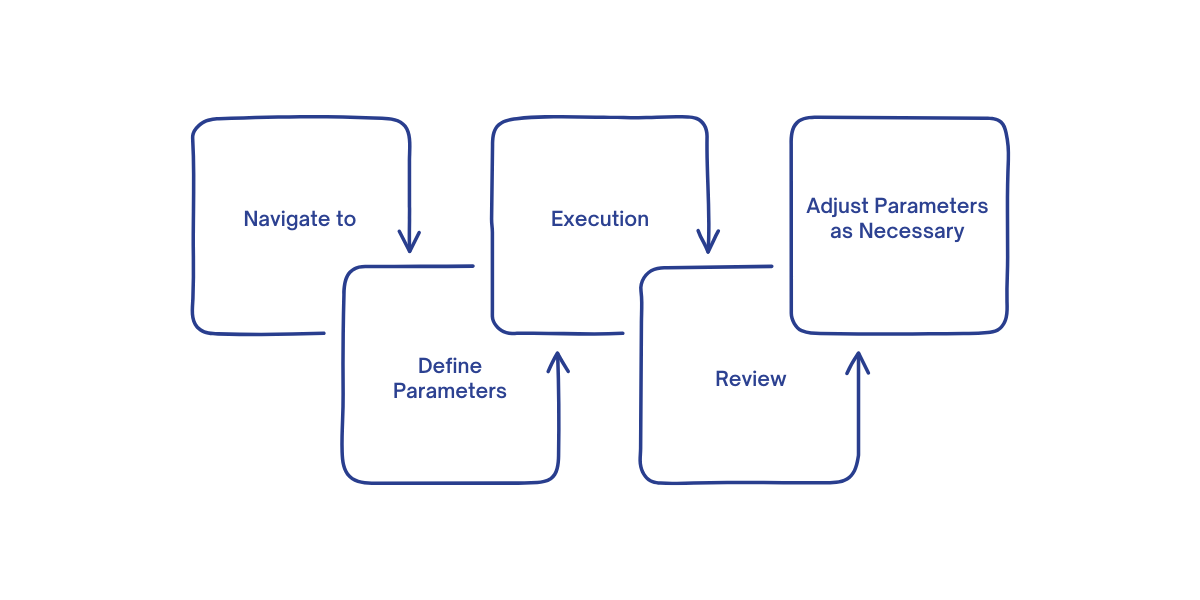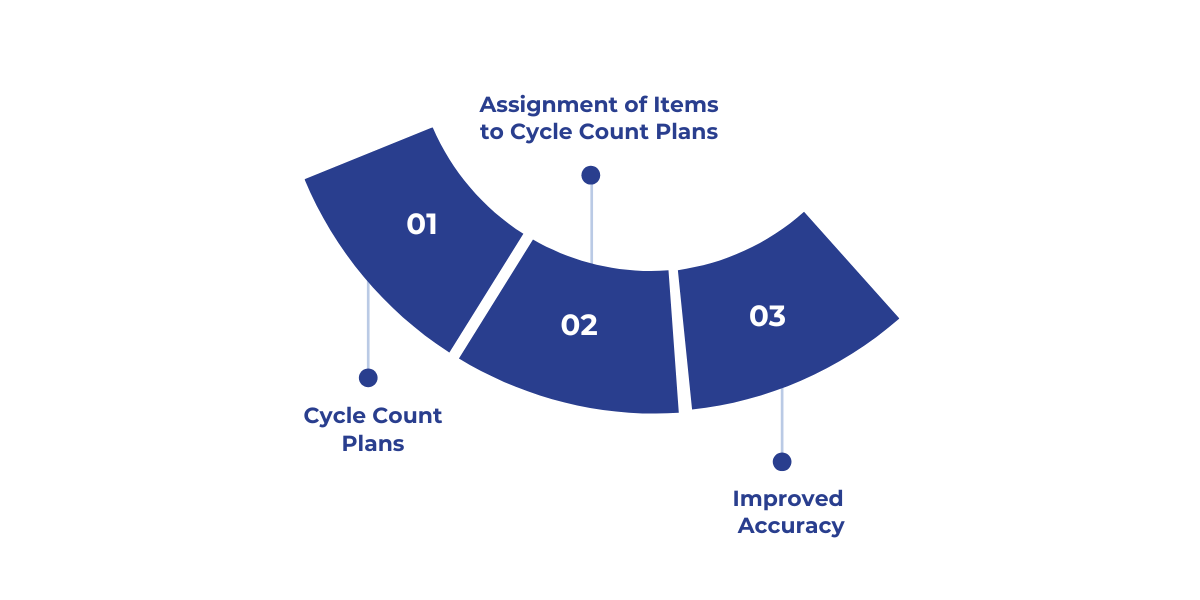

Effective inventory management can be a challenge for many organizations, especially when dealing with large volumes of products and varying levels of importance. Without a clear way to prioritize items, businesses may experience overstocking or stockouts, leading to inefficiencies and missed opportunities.
In Dynamics 365 Finance and Operations, ABC classification helps businesses streamline inventory management by prioritizing high-value items, optimizing resources, and improving operational efficiency.
By dividing inventory into three categories—A, B, and C—this approach ensures that critical items receive the attention they deserve while minimizing the focus on less valuable items.
This blog will cover the fundamentals of ABC classification, its implementation within Dynamics 365, configuration steps, reporting options, and how it integrates with cycle count planning to optimize inventory management.
Also Read: Complete Guide to Dynamics 365 Finance and Operations
Now, let’s explore how ABC classification can be effectively implemented within Dynamics 365 Finance and Operations.
.png)
Implementing ABC classification in Dynamics 365 Finance and Operations involves a series of steps to ensure accurate categorization and effective inventory management. Below are the detailed steps to configure and execute the ABC classification:
Before applying the ABC classification, accurate and relevant data must be collected for each inventory item. This data forms the foundation for the classification process.
Required Data:
Example: For a retailer, if an item such as a premium brand of headphones has a high cost but is sold frequently, it would likely be categorized as "A" based on its high sales volume and value. In contrast, a low-cost accessory, like a phone case, might fall into "C" due to its lower unit price and frequency of sale.
Once the necessary data is collected, the next step is to perform an analysis of each item’s consumption value. This is done by multiplying the unit cost of the item by its annual usage or sales volume.
Calculation Formula:
Insight: Items with a high annual consumption value are considered more critical, regardless of the quantity. This ensures that items generating significant revenue or incurring high costs are appropriately prioritized in inventory management.
Example: If an item costs $100 and is used 500 times a year, its annual consumption value will be $50,000. If another item costs $5 and is used 10,000 times a year, its annual consumption value would be $50,000 as well.
Both items have the same annual consumption value but would fall into different categories based on further classification thresholds.
After calculating the annual consumption value, the next step is to categorize items in descending order of their annual consumption value. This allows businesses to see which items contribute the most to their bottom line.
Categorization Process:
Example: A pharmaceutical company might classify a high-cost drug (e.g., $500 per unit) as "A", while less expensive but higher-volume over-the-counter medications (e.g., $10 per unit) would fall into "C", despite their high quantity.
The final step involves assigning each item to one of the three categories (A, B, or C) based on predefined thresholds. This classification enables businesses to focus their efforts on the most valuable items and manage lower-value items accordingly.
ABC classification is not a one-time process. Business conditions change, and inventory dynamics evolve. It is important to regularly review and adjust classifications to ensure they continue to reflect the organization’s priorities.
Now, let’s dive into the technical steps required to configure ABC classification in Dynamics 365 to achieve optimal results.

To configure ABC classification in Dynamics 365, follow the steps outlined below to ensure proper categorization and alignment with business objectives.
Each step allows you to customize the classification process based on specific business needs and inventory characteristics.
Start by accessing the ABC Classification setup page, which serves as the foundation for configuring the inventory categorization process.
In this step, you’ll set up the key parameters that will guide the classification process, ensuring the system categorizes inventory items based on your specific business needs.
Date Range
Interest Rates
Category Percentages
Classification Model
Once you’ve set up the parameters, the next step is to execute the classification process to categorize your inventory items accordingly.
After execution, reviewing the results ensures that the classification process aligns with business goals and objectives, allowing for necessary adjustments.
In this step, make necessary adjustments to the parameters based on the review, ensuring that the classification reflects the most accurate and current business priorities.
Also Read: PowerApps and Dynamics 365 Finance Integration Guide
Once executed, reporting tools within Dynamics 365 provide invaluable insights to help businesses monitor and improve inventory management.
Dynamics 365 Finance and Operations provides robust reporting tools to generate detailed insights into inventory performance based on ABC classifications. These reports help businesses monitor stock levels, assess inventory turnover, and make data-driven decisions.
You can create customized reports that focus on key metrics for each classification, such as stock value, movement frequency, and sales trends. These reports help businesses identify slow-moving items or high-value products, allowing for targeted actions.
Example: A custom report for Class A items could highlight the inventory value, sales trends, and stock levels for high-priority products, enabling quick decisions on reordering or promotions.
Schedule reports to align with periodic classification updates (e.g., monthly, quarterly). This ensures timely insights into changes in inventory trends and sales performance.
Example: Set up a quarterly report to capture any shifts in the classification of items based on new sales data or consumption patterns, ensuring that high-priority items are always properly managed.
By utilizing ABC classification reports, businesses can quickly identify discrepancies, adjust inventory practices, and optimize stock levels of high-value items, ensuring that inventory management is consistently aligned with business goals.
Another key integration to enhance inventory accuracy is the combination of ABC classification with cycle count planning.

Integrating ABC classification with cycle counting enhances inventory accuracy by focusing on the most critical items, ensuring they are counted more frequently and reducing the chances of discrepancies and stock-outs.
First, develop cycle count plans that define how frequently items should be counted, based on their classification. This ensures that resources are allocated effectively to prioritize high-value items.
Once cycle count plans are created, it’s time to assign items to their respective plans based on their ABC classification. This ensures that high-priority items receive the most frequent checks.
Ultimately, aligning the cycle counting frequency with the ABC classification significantly improves inventory accuracy. High-value items are tracked more closely, reducing the risk of discrepancies.
Below is a summary of how ABC classification can be applied to improve inventory control, procurement, cost management, and warehouse efficiency.
Also Read: AI Revolution in Retail: From Service to Supply Chain
By categorizing inventory into Class A, Class B, and Class C, organizations can reduce excess inventory, prevent stock-outs, and cut costs. When integrated with tools like Dynamics 365, ABC classification enables businesses to align their inventory strategies with overall goals, thereby enhancing decision-making and performance.
At WaferWire, we help businesses seamlessly integrate ABC classification within Dynamics 365 to get greater control and efficiency in inventory management.
Get in touch today to discover how we can support your journey towards a more optimized and resilient supply chain.
Q: How can ABC classification reduce inventory holding costs?
A: By categorizing inventory into Class A, B, and C, businesses can focus on reducing stock of low-value items (Class C), optimizing storage space, and minimizing unnecessary holding costs for less critical products.
Q: Can ABC classification improve demand forecasting accuracy?
A: Yes, by categorizing inventory based on value and consumption patterns, businesses can better forecast demand for high-value items (Class A), ensuring they are available when needed while avoiding excess stock of low-value items.
Q: How does ABC classification contribute to inventory turnover optimization?
A: ABC classification prioritizes high-value items, ensuring they are sold or used first, increasing their turnover rate. This helps businesses maintain a balance between stock levels and sales demand, optimizing inventory turnover.
Q: How does ABC classification help in managing seasonal inventory?
A: By applying ABC classification, businesses can identify seasonal trends and manage stock more effectively, ensuring high-value seasonal items (Class A) are adequately stocked, while low-value seasonal items (Class C) are minimized during off-peak times.
Q: How can ABC classification improve supplier relationship management?
A: With ABC classification, businesses can prioritize their procurement of Class A items, ensuring timely reordering of critical stock. This helps establish stronger relationships with key suppliers by focusing on their most important products and improving supply chain efficiency.

